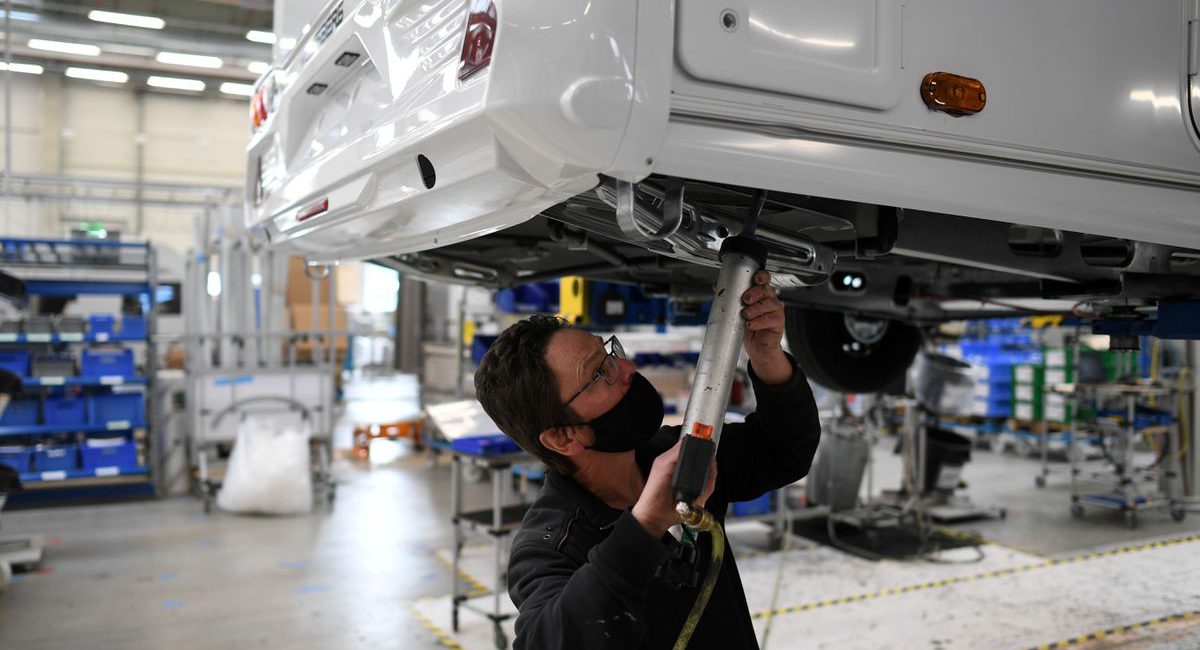A worker assembles a vehicle at the Knaus-Tabbert AG factory in Jandelsbrunn near Passau, Germany, March 16, 2021. Picture taken March 16, 2021. REUTERS/Andreas Gebert/File Photo LONDON, Jan 24 (Reuters) – Euro zone business activity made a surprise return to modest growth in January, adding to signs the downturn in the bloc may not be as deep as feared and that the currency union may escape recession, a survey showed. S&P Global’s flash Composite Purchasing Managers’ Index (PMI), seen as a good gauge of overall economic health, climbed to 50.2 this month from 49.3 in December. January was the first time the index has been above the 50 mark, which separates growth from contraction, since June and the reading was ahead of the median Reuters poll forecast of 49.8. "The rise in the purchasing managers’ indices is likely to fuel hopes among many that the economy in the euro area might just escape a recession after all," said Christoph Weil at Commerzbank. However, Weil added that a clear deterioration in the economic environment continued to point to at least a mild recession. A moderate winter so far, falling gas prices and recent positive economic data meant some quarterly growth […]
Click here to view original web page at www.reuters.com










